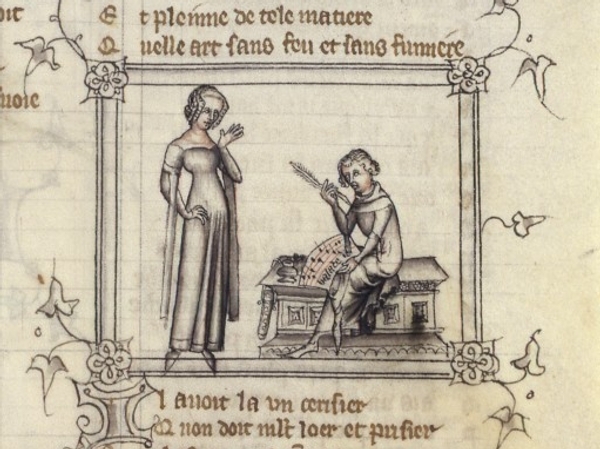Let’s
wrap up our month of Medieval music by looking at a very important genre that
developed in the early 13th century – the motet. This type of polyphony adds a newly-written
Latin text to the upper voices of clausulae. Wait – what does that mean?
“Clausulae” were sections of organum (see my last post!) that could be removed
and replaced with a new section. Therefore, a motet contained a new text sung
with a lower part that usually was taken from chant. Eventually more voices
were added, singing their own individual texts. The motet developed in form
over time and was performed both inside and outside of the church. One example
of a leading motet composer is Guillaume de Machaut.
 |
| Guillaume de Machaut Courtesy of wikimedia.org |
Around
this time, we see more developments in notation including note duration
signified by note shapes – quite similar to how we notate music today! Also, we
see mensuration signs, the ancestor to modern-day time signatures.
Next
month, we’re taking a leap forward in time and hitting our annual music and
cinema month in Clef Notes! Join me as we look at our favorite films and how
music plays a major part.
